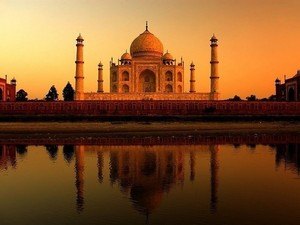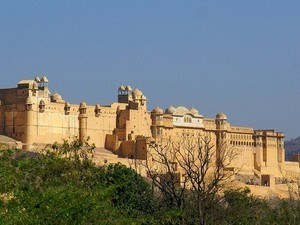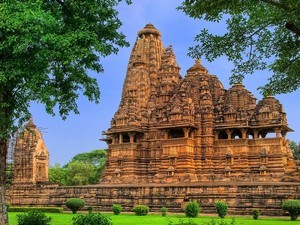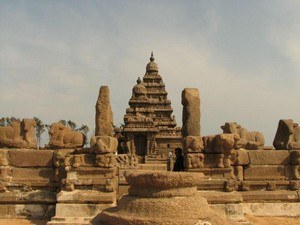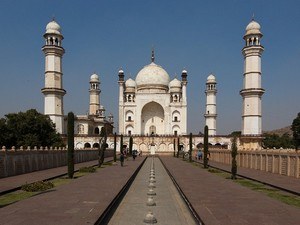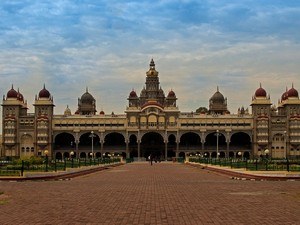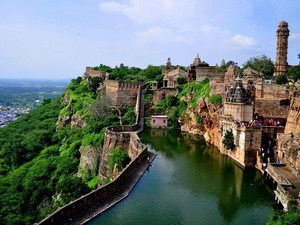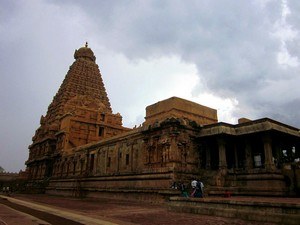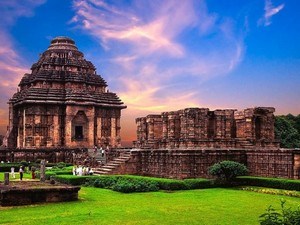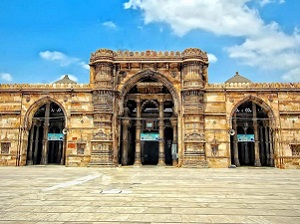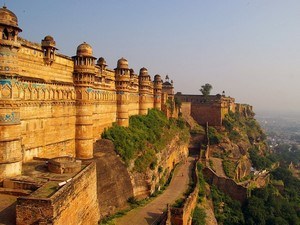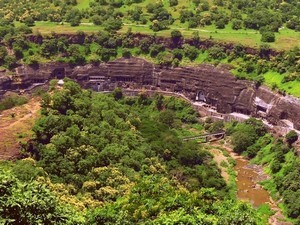1
DAY 1 : TRAVEL TO HAMPI & SIGHTSEEING
DAY 1 : TRAVEL TO HAMPI & SIGHTSEEING
 Sightseeing
Sightseeing
Leisure / No Sightseeing
At a distance of 9 km (or 2.3 km by walk) from Hampi Bus Stand and 5.5 km from Kamalapura Bus Stand, Vittala Temple is an ancient monument located on the southern bank of the Tungabhadra River in Hampi. It is one of the largest and the most famous structures to visit as part of Hampi tour packages.
The Vijaya Vittala or Vittala Temple is the most famous and popular tourist places to visit in Hampi. This temple is famous for its Stone Chariot and Musical Pillars. It was built around the 15th century AD during the reign of King Devaraya II (1422 - 1446 AD). Several portions of the temple were expanded and enhanced during the reign of Krishnadevaraya (1509 - 1529 AD). This temple is dedicated to Lord Vishnu in the form of Vittala. The temple is well-known for its exceptional architecture and unmatched craftsmanship. This predominant monument of Hampi is a major .....
 Duration of visit: 1-2 Hours
Duration of visit: 1-2 Hours
 Timings: 8.30 AM to 5.30 PM
Timings: 8.30 AM to 5.30 PM
At a distance of 10 km from Hampi Bus Stand (or 1.5 km by walk) and 6 km from Kamalapur Bus Stand, King's Balance is located southwest of Vittala Temple, at the end of the Kampa Bhupa's Path in Hampi. It is one of the best places to visit in Hampi.
King's Balance is also called Tula Bhara or Tula Purushadana. It is regarded as one of the unique monuments of Hampi. It consists of two lofty carved granite pillars about 15 feet high supporting a stone beam about 12 feet in length. It has three hoops on the underside from which the balances or scales are hung. One of the pillars has a bas-relief depicting a king and two queens, possibly Krishna Deva Raya and his consorts. The structure appears like an archway.
According to the legend, the balance was used by the king to weigh himself with gold, gems, silver, and precious stones and distributed to the temple priests on certain occasions like Solar .....
 Duration of visit: 15 Mins
Duration of visit: 15 Mins
 Timings: 24 Hrs
Timings: 24 Hrs
At a distance of 1.2 km from Kamalapura Bus Stand and 5 km from Hampi, Pattabhirama Temple is situated near ASI museum in Kamalapura. Along with the Virupaksha and Vittala temples, the Pattabhirama temple represents the creative temple-building ventures of the Vijayanagara rulers.
Though it contains two inscriptions of King Achyuta Raya, the temple is believed to have been constructed well ahead of his regime. Dedicated to Lord Rama, this temple is known for its intricate architecture. It was a prominent destination for devotees during the period of the Vijayanagara Empire.
The Pattabhirama Temple is situated in the center of a huge rectangular enclosure. The east-facing sanctum has a three tier vimana with an antarala, maha-mandapa and ardha-mandapa. The large and square maha-mandapa is a finely built structure with tall and slender composite pillars of various types and is the best example of Vijayanagara style architecture. To the east of the ardha-mandapa is the usual .....
 Duration of visit: 30 Mins
Duration of visit: 30 Mins
 Timings: 6 AM - 6 PM
Timings: 6 AM - 6 PM
2
DAY 2 : HAMPI SIGHTSEEING
%%Itinerary_Title_Day2%%
At a distance of 800 m from Hampi Bus Stand, Ugra Narasimha Temple is located south of Sri Krishna Temple in Hampi. The Lakshmi Narasimha statue is one of the most imposing sculptures found in Hampi.
The specialty of the sculpture is that it is the largest monolith statue in Hampi with a height of 6.7 m. It was carved in 1528 AD during the rule of Krishnadevaraya. The protruding eyes and the facial expression are the basis for this name. This is considered to be among the most important monuments found in Hampi and is visited by a large number of people throughout the year.
Lord Narasimha is sitting on the coil of a giant seven-headed Adisesha (guardian snake of Lord Vishnu) and the lions guard the sides of the idol. The heads of the snake act as the hood above his head. The Lord in this temple is in cross-legged yoga position with the belt supporting the knees. The original statue contained the image of goddess Lakshmi, consort .....
 Duration of visit: 30 Mins
Duration of visit: 30 Mins
 Timings: 6 AM to 6 PM
Timings: 6 AM to 6 PM
At a distance of 500 m from Hampi Bus Stand, Sri Krishna temple is situated on the Hampi main road. Krishna temple is one of the important places to visit in Hampi, and among the Group of Monuments which is currently listed as a part of the World Heritage Monuments by UNESCO.
The temple is situated close to the Virupaksha Temple. According to the history, Bala Krishna Temple was built by Krishnadevaraya of the Vijayanagara Empire in 1513 AD. He built this temple to commemorate his victory over Prataparudra Gajapati, the ruler of the eastern kingdom of Udayagiri (now Orissa) which is mentioned in the inscriptions on the slab. The main idol installed in the temple was the figure of Bala Krishna and now it is preserved in the State Museum at Chennai.
This temple was built in Panchayathana style with two enclosures. Built-in the center of .....
 Duration of visit: 1 Hour
Duration of visit: 1 Hour
 Timings: 6 AM to 6 PM
Timings: 6 AM to 6 PM
At a distance of 250 m from Hampi Bus Stand, The Kadalekalu Ganesha temple is situated on the slope of the Hemakuta Hill in Hampi. It is a remarkable monolithic statue and one of the most popular tourist sites in Hampi.
Kadalekalu Ganesha is one of the largest statues of Lord Ganesha in Hampi. The giant Ganesha statue is 4.6 m (15 feet) tall and was carved out of a single boulder. The belly of this statue resembles a Bengal gram (Kadalekalu in Kannada) and hence the statue has been given the name of Kadalekalu Ganesha.
The temple of Kadalekalu Ganesha is a beautiful stone structure. A sanctum is built around the statue. The pillared hall in front of this sanctum is decorated with tall and beautiful pillars. The sculptures on the pillars are depicted with mythological characters. The pillars are constructed in the typical Vijayanagara style of architecture. One of the pillars has a carving depicting naughty infant Krishna hiding .....
 Duration of visit: 15 Mins
Duration of visit: 15 Mins
 Timings: 6 AM to 6 PM
Timings: 6 AM to 6 PM
At a distance of 400 m from Hampi Bus Stand, Sri Virupaksha temple is a Hindu temple located at the western end of Hampi Bazaar in Hampi. It is the most famous and important temples in Hampi, and among the must include places in Hampi Packages.
Virupaksha Temple is dedicated to Lord Shiva and is renowned as one of the most sacred pilgrimage in Karnataka. Virupaksha is an incarnation of Lord Shiva, and among all the surrounding ruins, this temple is intact and is still in use. This temple is also called the Pampapathi temple and is one of the most places to visit in Hampi. Situated on the southern bank of the Tungabhadra River, it is a part of the Group of Monuments at Hampi, designated as a UNESCO World Heritage Site.
According to history, this temple has been functioning uninterruptedly ever since .....
 Duration of visit: 1 Hour
Duration of visit: 1 Hour
 Timings: 6 AM - 1 PM and 5 PM - 9 PM
Timings: 6 AM - 1 PM and 5 PM - 9 PM
At a distance of 600 m from Hampi Bus Stand, The Hemakuta group of temples is a cluster of ancient temples situated on the Hemakuta hill in Hampi adjacent to Virupaksha Temple.
Hemakuta, literally meaning golden hillock is one of the most charming hillocks in Hampi. It is dotted by over fifty structures of different types including temples, mandapas, galleries, and gateways of various sizes. Hemakuta Hill offers an excellent view of Hampi Bazaar and Virupaksha temple.
The Hemakuta hill has three entry points, one on the south-eastern side, one on the south, and the other on the eastern side of the hill which leads to the street near the Virupaksha temple. There are more than 35 temples on Hemakuta Hill. These temples are built in the pre-Vijayanagara and Vijayanagara periods (9th to 14th century AD). These are referred to as Jain Temples, but many of these temples are dedicated to Lord Shiva.
Two of the .....
 Duration of visit: 1 Hour
Duration of visit: 1 Hour
 Timings: 6 AM to 6 PM
Timings: 6 AM to 6 PM
BREAK FOR MEALS / HOTEL CHECK-IN | CHECK-OUT / SHOPPING / LEISURE
Hampi Bazaar is located beside the Hampi Bus Stand and located in front of the Virupaksha temple. It is also known as Virupaksha Bazaar. About a kilometer long, the eastern side of the bazaar ends at the foothill of Matanga Hill.
Hampi Bazaar is a unique attraction of Hampi. Both sides of the street have a series of very old pavilions, some single storied and others two storied. These buildings were once the part of a booming market and houses of the upper class merchants. The arcades are open structures with no doors. It was once a place where merchants used to sell precious stones, jewellery, silk clothes, etc. during Vijayanagara rule. It was also a market where cows and horses were traded. The Hampi Bazaar still functions as a market place, though it is no longer as attractive as it was. The western end of the street has been encroached by a number of shop owners and small restaurants. These shops that sell items like ethnic clothes, bags and pooja artifacts.
A huge Nandi, .....
 Duration of visit: 30 Mins
Duration of visit: 30 Mins
 Timings: 24 Hrs
Timings: 24 Hrs
At a distance of 1 km from Hampi Bus Stand & 500 m from Hampi Bazaar, Achyutharaya temple is located between the Gandhamadana hill and Matanga hill. It is one of the last grand creations of the Vijayanagara dynasty before the fall of the empire.
This temple has been built during King Achyuta Deva Raya, by an officer Salakaraju Tirumaladeva. Achyuta Deva Raya was the younger brother of Krishna Deva Raya and succeeded him in 1529. The main deity of the temple is Lord Tiruvengalanatha, an incarnation of Lord Vishnu. The temple was originally named Tiruvengalanatha temple but gradually came to be known as Achyutaraya Temple
The temple was built in Vijayanagara style architecture. This temple complex has two enclosures, each marked by an entrance tower. The main temple is situated within the second enclosure. The main temple consists of a garbhagriha, an antarala, sukanasi, a rangamandapa and an ornate Kalyana mandapa.
The Kalyana mandapa of the temple is a spacious structure .....
 Duration of visit: 30 Mins
Duration of visit: 30 Mins
 Timings: 8.30 AM to 5.30 PM
Timings: 8.30 AM to 5.30 PM
At a distance of 1 km from Hampi Bus Stand, Matanga Hill is located at the eastern end of the Hampi Bazaar. It offers a breathtaking view of the ruined city and the beautiful landscape below.
Matanga Hill is one of the major places to visit in Hampi. Being the highest point in Hampi; this is the best spot to get an aerial view of Hampi and its surroundings. There is a small temple on the top of Matanga Hill. On the way down there is a small cave marked where it is believed that Sugriva, ruler of Kishkinda, used to hide.
According to mythology, Matanga Hill is one of the holy places described in the epic Ramayana as the base of Saint Matanga. It is also the place where Sugriva benefited from the magical protection of the sage Matanga who had placed a curse of death on Vali, if he dared enter the area of Matanga Hill.
Being the highest peak in Hampi, the hill is a trekker's delight and offers pleasing views of the entire town below. There are many trekking paths that .....
 Duration of visit: 1 Hour
Duration of visit: 1 Hour
 Timings: 6 AM to 6 PM
Timings: 6 AM to 6 PM
3
DAY 3 : HAMPI SIGHTSEEING & TRAVEL TO BADAMI
%%Itinerary_Title_Day2%%
At a distance of 1 km from Kamalapur Bus Stand and 3 km from Hampi Bus Stand, Queen's Bath is located close at the entrance of the Royal Enclosure in Hampi.
The Queen's Bath is believed to be constructed by Achyuta Raya for the women of the royal family of Vijayanagara. Built in Indo-Islamic style, the Queen's Bath is an elaborate structure with a simple exterior and an ornate interior. It is a rectangular building and is surrounded by ornate balconies, each having a set of three windows. Each arched bay surrounding the bath is decorated with intricate carved stucco ornamentation on the ceilings and the vaults placed above the arched bays. The depth of the pool is 6 feet and has stone steps leading to the bottom of the tank.
This 30 square meter structure is surrounded by a moat on all sides and a bridge like structure is made to reach the pool. Probably this was designed to prevent people from entering the area when the royals were bathing.
The Queen's Bath is an empty .....
 Duration of visit: 30 Mins
Duration of visit: 30 Mins
 Timings: 6 AM - 6 PM
Timings: 6 AM - 6 PM
At a distance of 3.5 km from Hampi Bus Stand, Mahanavami Dibba or The House of Victory is a beautiful stone platform situated inside the Royal Enclosure in Hampi. It is also known as Dasara Dibba and is one of the most impressive structures to be visited during your Hampi Trip.
Mahanavami Dibba was built by King Krishnadevaraya in 1513 AD after his conquest over the kingdom of Udayagiri, present-day Orissa. The grand platform was used as a stage by the kings to watch the army march past, the war games, and the royal procession that were held during the Mahanavami festival, also known as the Dasara festival, hence the name Mahanavami Dibba. It is one of the most fascinating Hampi tourist places.
Dasara Dibba represents the typical Vijayanagara style of architecture. The stone platform is about 12 m in height. The huge structure is a square platform with .....
 Duration of visit: 30 Mins
Duration of visit: 30 Mins
 Timings: 6 AM to 6 PM
Timings: 6 AM to 6 PM
At a distance of 100m from Mahanavami Dibba and 3.5 km from Hampi Bus Stand, The Stepped tank is located in Durbar Area in Royal enclosure of Hampi. This famous Stepped Tank was excavated by Archeological Survey of India during 1980-1983. This tank is very ornate and one of the most beautiful monuments of Hampi.
The Stepped Tank is constructed using finely finished blocks of black stones. This Tank was probably used by the royals for religious purpose. The beautiful tank is about 22 square meters and about 7 meters deep. It has five distinct tiers, each fitted with steps set in a pleasing pattern. The marks on the tank and individual blocks indicate the direction of flow of water. The water to this tank was drawn through the intelligently designed stone channels which are well preserved till date.
Timings: 6 AM to 6 PM
 Duration of visit: 15 Mins
Duration of visit: 15 Mins
 Timings: 6 AM - 6 PM
Timings: 6 AM - 6 PM
At a distance of 3.5 km from Hampi Bus Stand and 2 km from Kamalapur Bus Stand, The Royal Enclosure in Hampi is a huge fortified area that was once the heart of the Vijayanagara Empire.
This was the place where the royal family of the Vijayanagara Empire used to reside and the durbar used to be performed. Spread over an area of 59,000 square meters, it is believed to have once housed over 45 buildings, all used by the royal family. This center was separated from the main Hampi center by an irrigation canal. The sprawling area was protected by double walls. It had three entrances, two on the northern side and one on the western side.
The Royal Enclosure contains the ruins of several palace bases, water tanks, temples, ornate platform and canals and many other structures. Unlike the temples, which were constructed with stone, many of the palaces were built out of wood. The most impressive structure in the Royal Enclosure is the Mahanavami .....
 Duration of visit: 30 Mins
Duration of visit: 30 Mins
 Timings: 6 AM - 6 PM
Timings: 6 AM - 6 PM
At a distance of 3.5 km from Hampi Bus Stand and 2 km from Kamalapur Bus Stand, The King's Audience hall, also known as Durbar Hall is located inside the Royal Enclosure at Hampi. It is a ruined structure whose remnants can be spotted on the western side of the Mahanavami Dibba or Dasara Dibba.
The King's Audience Hall was built during the time of the Vijayanagara Empire. According to the famous historian Abdul Razzak, who visited Hampi during the reign of Devaraya II, the King's Audience Hall was one of the most magnificent buildings in Hampi during that time. It is believed that this is the place where the king addressed his administration and the public.
The King's Audience Hall was a huge building built with huge blocks of stone and wood. The structure has a ruined stone stairway at the rear of the hall that suggests it might have been a two storied building. The super structure is not present right now. Vestiges of pillar sockets and bases show that it was originally a .....
 Duration of visit: 15 Mins
Duration of visit: 15 Mins
 Timings: 6 AM to 6 PM
Timings: 6 AM to 6 PM
At a distance of 3 km from Hampi Bus Stand, Hazara Rama Temple is a beautiful temple located at the center of Royal Enclosure. The temple is dedicated to Lord Rama.
Hazara Rama Temple was built in the early part of the 15th century by Devaraya II. The term Hazara Rama literally means a thousand Rama and refers to the large number of Ramayana panels depicted on the walls. This temple is believed to be the private temple of the kings and the royal family of Vijayanagara..
It was originally built as a simple structure within a rectangular complex. It consisted of only a sanctum, a pillared hall and an ardha-mandapa. Later the temple structure was renovated to add an open porch and beautiful pillars. The pillared hall has unique black stone pillars which are raised on a stone platform at the center of the hall. The interior of the temple has richly ornately columns. An empty pedestal with three holes signifies that the temple once had idols of Rama, Lakshmana and Sita.
Hazara .....
 Duration of visit: 30 Mins
Duration of visit: 30 Mins
 Timings: 6 AM to 6 PM
Timings: 6 AM to 6 PM
At a distance of 500 m from Hazara Rama Temple, 3.5 km from Hampi Bus Stand and 2 km from Kamalapur Bus Stand, Lotus Mahal is situated within Zenana Enclosure, a secluded area reserved for the royal ladies of the Vijayanagara Empire. This is also known as Chitragani Mahal and Kamal Mahal.
Lotus Mahal is the primary attraction of the Zenana Enclosure. Shaped like a lotus flower from the top, the archways of the structure resemble petals of a lotus and provide the whole structure the shape of a half-open lotus. The central dome is carved in the shape of a lotus bud.
Lotus Mahal is built in Indo-Islamic style. The two storied structure is symmetrically laid out, with equal projections on four sides. The base of the structure resembles Hindu temple style while the upper superstructure is Islamic in architecture with pyramidal towers.
The upper floor of the Mahal has balconies with arched windows. The arches of the ground floor are recessed and ornate. The walls are protected .....
 Duration of visit: 15 Mins
Duration of visit: 15 Mins
 Timings: 8 AM to 6 PM
Timings: 8 AM to 6 PM
At a distance of 500 m from Hazara Rama Temple, 3.5 km from Hampi Bus Stand and 2 km from Kamalapur Bus Stand, The Zenana enclosure is located near the Royal Enclosure at Hampi. This was a fortified and secluded area reserved for the royal ladies of the Vijayanagara Empire.
The structures of the Zenana Enclosure are designed in the Indo-Islamic style of architecture. Zenana Enclosure has several structures such as the Lotus Mahal, Basement of the Queen's Palace, Water Pavilion, Treasury Building and the Watch Towers. The major attraction inside the enclosure is the Lotus Mahal. Apart from this, there are remains of water pavilion with a decorated platform in the center and Elephant Stables. The Queen's Palace is located at the middle of this area. This is the largest palace base excavated in the Hampi ruins so far. The Royal Treasury Building is a rectangular structure that is located in the north-western corner of the enclosure.
The enclosure is surrounded by a fortifying .....
 Duration of visit: 30 Mins
Duration of visit: 30 Mins
 Timings: 8 AM to 6 PM
Timings: 8 AM to 6 PM
At a distance of 500 m from Hazara Rama Temple, 3.5 km from Hampi Bus Stand and 2 km from Kamalapur Bus Stand, Elephant Stable is an ancient monument located just outside the Zenana Enclosure in Hampi.
The Elephant Stable is an impressive structure that was used to provide shelter for the royal elephants of the Vijayanagara Empire. It is one of the very few structures not suffered the damage during Deccan Sultanate attack on Hampi and is a major attraction among the tourists.
This is a beautiful example of Indo-Islamic architecture. There are 11 domed tall chambers. The whole building looks symmetric with respect to this central hall. The center chamber is specially decorated and big. The other 10 domes represent the Islamic style of architecture. Each of the domes was decorated with ornate plaster on the interior as well as the exterior.
Metal hooks on the inside roof can be seen. The elephants were tied to these hooks from the center of the ceiling. At the rear of .....
 Duration of visit: 15 Mins
Duration of visit: 15 Mins
 Timings: 8 AM to 6 PM
Timings: 8 AM to 6 PM
At a distance of 300 m from Kamalapur Bus Stand and 4 km from Hampi Bus Stand, The Archaeological Museum at Kamalapur is dedicated to the ruins of Hampi and surrounding places.
The sculptures from various locations of the Hampi ruins were collected by British officers and housed earlier at elephant stables. The first museum of Archaeological Survey of India was established here in 1972. The antiquities were shifted to a modern building at Kamalapur. This museum exhibits elegant replicas of Krishnadevaraya and his queens greeting the visitors at the entrance. The Museum houses a large collection of sculptures and artifacts spread across four galleries.
The first gallery of the museum contains two scaled models of Hampi along with all historical monuments. The larger model presents a complete topography of the region along with the monuments and temples located on it. It also displays the hills and rivers in Hampi. It provides an excellent idea about the various attractions .....
 Duration of visit: 30 Mins - 1 Hr
Duration of visit: 30 Mins - 1 Hr
 Timings: 10 AM - 5 PM
Timings: 10 AM - 5 PM
4
DAY 4 : AIHOLE & PATTADAKAL SIGHTSEEING
%%Itinerary_Title_Day2%%
At a distance of 100 m from Aihole Bus Stand, Durga Temple, also known as Fort Temple, is an ancient Hindu shrine situated at Aihole, Karnataka. It is one of the most famous places to visit in Aihole with striking architecture and wonderful carvings.
Dedicated to the goddess Durga, the Durga Temple is located inside the main enclosed complex of Aihole monuments. The name of the temple is originated from a fortification (durgam) that existed around the temple earlier. It is one of the main places to visit as part of Aihole tour packages.
Build between the 7th and 8th centuries by Chalukyas, the temple plan in U shape resembles that of Buddhist Chaitya halls. The temple has a mukha-mandapa, a sabha-mandapa, and an inner sanctum with Shiva linga. The unique part of the temple is the pillared corridor around the temple that allows pilgrims to take pradakshinas .....
 Duration of visit: 30 Mins
Duration of visit: 30 Mins
 Timings: 9 AM to 5 PM
Timings: 9 AM to 5 PM
At a distance of 200 m from the Aihole Bus Stand, the Archaeological Museum is a museum situated inside the Durga Temple complex, Aihole. It is one of the popular places to visit as part of Aihole tour packages.
Planned as a sculpture shed in 1970, the Archaeological Museum in Aihole was converted into a full-blown museum in 1987. The museum houses a good collection of artifacts from the Aihole, Pattadakal, and Badami regions. It is one of the must visit Aihole tourist places.
The museum consists of 6 galleries and an open-air gallery. The artifacts in the museum are dated between the 6th and 15th centuries. A variety of Ganesha sculptures, Saptamatrikas with archaic features, Nataraja, Ambika of Jaina affinity, an attractive sculpture of Bodhisatva, and a mutilated anthropomorphic figure of Megalithic period are some of the important exhibits.
One .....
 Duration of visit: 15 Mins
Duration of visit: 15 Mins
 Timings: 9 AM to 5 PM
Timings: 9 AM to 5 PM
At a distance of 200 meters from Aihole Bus Stand and 100 meters south of Durga Temple, Suryanarayana Gudi 7th / 8th century temple situated opposite to Ladkhan Temple.
Dedicated to God Surya, this temple is built in Rekhanagara style with curvilinear tower. The temple consists of a small mandapa with four pillars, rangamandapa with four tall pillars and 12 half pillars followed by the garbhagriha. The doorframe of the sanctum has an image of Garuda holding two snakes, Ganga, Yamuna and an image of Surya in seated posture.
The sanctum has a statue of God Surya. The sanctum also has four pillars inside, which is a peculiar design. The sikhara is partially damaged.
Complex Timings: 9 AM to 5 PM
Entrance: Rs. 5, Rs. 25 for camera.
 Duration of visit: 15 Mins
Duration of visit: 15 Mins
 Timings: 9 AM to 5 PM
Timings: 9 AM to 5 PM
At a distance of 200 meters from Aihole Bus Stand and 100 meters south of Durga Temple, Ladkhan Temple is the oldest temple in Aihole believed to be built in 5th century by first Chalukyan ruler Pulakesi I. It is located inside the main enclosed complex of Aihole monuments. The temple is built in Mandapa style with plan roof.
Dedicated to Lord Shiva, the temple name is originated from Ladkhan, a Muslim general from Bijapur sultanate who stayed in the temple during their invasion of the region. Originally a Surya temple, the temple has a mukha-mandapa and a large sabha-mandapa. There is no separate garbhagriha in the temple and a stone booth is added to house the deity.
The large pillars in the mukhamandapa have beautiful carvings of gods along with floral designs. The outer walls are also exhibit extensive designs of early Chalukyas. The sabhamandapa has a big bull at the center. Large plain pillars support the sabhamandapa. .....
 Duration of visit: 15 Mins
Duration of visit: 15 Mins
 Timings: 9 AM to 5 PM
Timings: 9 AM to 5 PM
At a distance of 200 meters from Aihole Bus Stand and 100 meters south of Durga Temple, Goudaragudi Temple is one of the oldest temples in Aihole assigned to 5th century. It is situated beside Ladkhan Temple.
This temple is built in Madapa style on an elevated platform, few feet below the ground level of remaining temples. Dedicated to Mahalakshmi or Bhagavathi, the temple has a verandah supported by 16 pillars with slanting roof. The sanctum has circumambulatory path for pradakshinas. There are beautiful carvings of kalasha along the outer wall of the temple.
The entrance of the garbhagriha has image of Garuda and Gajalakshmi with four elephants above. The roof has a square platform, larger than the one seen on top of Ladkhan temple without any image.
Complex Timings: 9 AM to 5 PM
Entrance: Rs. 5, Rs. 25 for camera.
 Duration of visit: 15 Mins
Duration of visit: 15 Mins
 Timings: 9 AM to 5 PM
Timings: 9 AM to 5 PM
At a distance of 300 meters from Aihole Bus Stand and 200 meters south of Durga Temple, Chakra Gudi is a 9th century temple on southern end of Durga Temple Complex.
Dedicated to Lord Shiva, the temple sikhara is built in Nagara style with a large mandapa of round pillars. The temple accompanies few good carvings on the doorway and the seating stones near entrance of the temple. The doorway has an image of Garuda holding two snakes. The temple sikhara is intact and attractive.
There is a pushkarini (temple tank) beside the Chakra Gudi.
Complex Timings: 9 AM to 5 PM
Entrance: Rs. 5, Rs. 25 for camera.
 Duration of visit: 15 Mins
Duration of visit: 15 Mins
 Timings: 9 AM to 5 PM
Timings: 9 AM to 5 PM
At a distance of less than 100 meters from Aihole Bus Stand, Ambigera Gudi Complex is a group of three temples situated opposite to Durga Temple complex. The temple got its name from Ambiger (boatsmen) who used to live near the temple.
The complex has one main temple in ruined state with two small shrines. The main temple, believed to be a 10th century monument, has a nagara style sikhara with a mandapa and sanctum. The mandapa has two entrances and the ceiling of mandapa has a lotus image engraved. Built on elevated platform, the temple has a carved doorframe for the sanctum.
The second temple is a small one with broken images of Surya and Vishnu. The third temple is a small ordinary temple without any carvings and images.
This temple is open till 6 PM.
 Duration of visit: 15 Mins
Duration of visit: 15 Mins
 Timings: 8 AM to 6 PM
Timings: 8 AM to 6 PM
At a distance of 300 meters from Aihole Bus Stand & Durga Temple Complex, Jyotirlinga Temples are a group of monuments in ruined state. It is situated on the way to Meguti Jain Temple.
Dedicated to Lord Shiva, the complex has several small to medium temples, most of them in ruined state. The complex also houses a large stepped temple tank. Several temples still have Shivalinga, though no active poojas are performed here.
The unique feature of this complex is a wonderful set of Nandi mandapas. The pillars of the mandapas are richly carved with images of different gods. There are several mandapas lined in different directions with images of Shiva, Ganesha, Karthikeya, Ardhanareeswara among others.
There are few small temples built in Phamsana style, probably constructed during Rashtrakutas rule of the region.
This temple is open till 6 PM.
 Duration of visit: 15 Mins
Duration of visit: 15 Mins
 Timings: 8 AM to 6 PM
Timings: 8 AM to 6 PM
At a distance of about 800 meters from Aihole Bus Stand & Durga Temple Complex, Ravanapahadi is a wonderful rock-cut cave temple situated towards north-east side of Durga Temple.
Built in 6th century, the cave temple is dedicated to Lord Shiva. The exterior of the cave is simple with 4 pillars and dwarapalakas. The inner part of the cave has a rectangular verandah followed by a square hall and a garbhagriha. The major attraction of the cave is a carving of Lord Shiva with 10 hands in different Bharatanatya postures (a similar figure with 18 hands can be seen in Cave 1 of Badami).
The other important carvings in the cave include Mahishasura Mardhini, Varaha carrying Bhudevi, Lord Shiva & Parvathi. The inner hall of the cave is mostly plain and the garbha-griha has a monolithic Shivalinga. Outside the cave, there is a platform with nicely carved Nandi. There are two stone mandapas outside the cave on both sides of the entrance.
This temple is open till 6 PM.
 Duration of visit: 15 Mins
Duration of visit: 15 Mins
 Timings: 8 AM to 6 PM
Timings: 8 AM to 6 PM
At a distance of about 600 meters from Aihole Bus Stand & Durga Temple, Huchchimalli Temple is a well preserved temple close to Ravanapahadi (200 meters).
Believed to have been built around 6th to 8th century, the temple is dedicated to Lord Shiva. The temple is built on an elevated platform with a small mukhamandapa, a sabhamandapa and a gabha-griha. The doorframe has images of Garuda, Ganga, Yamuna, Elephant and amorous couple. The temple also has nice carvings of Brahma, Shiva, Vishnu and Gandharvas. The sabhamandapa has images of Indra, Yama and Kubera. The sabhamandapa and garbhagriha are separated by lattice window designs. The ceiling has an image of Karthikeya riding peacock.
The rekhanagara temple tower has images of Brahma and Surya and both sides. The temple also has a nice stepped temple tank. The walls of the tank have some beautiful images of Mahishasura Mardhini, Brahma, Vishnu, and scenes from the stories of Panchatantra.
There is a small temple in .....
 Duration of visit: 15 Mins
Duration of visit: 15 Mins
 Timings: 8 AM to 6 PM
Timings: 8 AM to 6 PM
At a distance of about 500 meters from Aihole Bus Stand & Durga Temple Complex, Mallikarjuna Temples are a group of temples situated on the way to Meguti Jain Temple past Jyotirlinga Temple Complex.
The complex has several temples build in different styles ranging from small to medium. Some of these temples are preserved while a majority of them are still in ruins. Excavation and restoration work is going on for several temples.
The complex features few unique structures. One of the Phamsana style temples built on an elevated platform has a roof sliding down through the sikhara to entrance. One temple with collapsed sikhara has a small mukhamandapa which is closed on one side. The mukhamandapa and rangamandapa of the temple are separated by lattice design windows.
There is a wonderfully built gateway in the center of the complex. There are also several large pillars scattered around the complex. The complex also comprises a large stepped temple tank in great condition.
The .....
 Duration of visit: 15 Mins
Duration of visit: 15 Mins
 Timings: 8 AM to 6 PM
Timings: 8 AM to 6 PM
At a distance of 800 meters from Aihole Bus Stand & Durga Temple Complex, Meguti Jain Temple is situated inside the fortified walls of Aihole fort on a hillock (past Buddhist Temple) south-east of Durga Temple Complex.
Constructed in 634 AD, Meguti Jain Temple is the only dated monument in Aihole. The temple has very valuable inscription in the form of poetry from the reign of Pulakesi II. The temple has two levels, ground level with a large pillared mukhamandapa with empty inner sanctum and a small shrine on top of it which can be reached through steps. The temple has seated figures of Jain teerthankaras. The construction of the temple appears to be incomplete.
One can have a panoramic view of the entire Aihole village and all the monuments of Aihole from the hilltop. The hill is supposed to be the site of Aihole Fort, but except the walls, none of the structures survive today.
From main road, the temple can be reached .....
 Duration of visit: 30 Mins - 1 Hr
Duration of visit: 30 Mins - 1 Hr
 Timings: 8 AM to 6 PM
Timings: 8 AM to 6 PM
At a distance of 300 meters from Pattadakal Bus Stand & Temple Complex entrance, Kadasiddeshwara Temple is the first temple you encounter in the temple complex. It is a small 8th century structure built in Nagara style.
Kadasiddeshwara Temple is relatively small with a sanctum and hall built on an elevated platform. There is a fine sculpture of Lord Shiva and Parvathi. At the entrance, nicely carved dwarapalakas welcome the tourists. The upper part of the outer wall has good carvings of dwarf figures and birds. The outer wall of the sanctum has beautiful sculptures of Ardhanareeswara, Shiva and Harihara.
Complex Timings: 9 AM to 5 PM
Entrance: Rs. 10 for Person, & Rs. 25 for Camera
 Duration of visit: 15 Mins
Duration of visit: 15 Mins
 Timings: 9 AM to 5 PM
Timings: 9 AM to 5 PM
At a distance of 300 meters from Pattadakal Bus Stand, Galaganatha Temple is a historical temple situated ahead of Sangameshwara Temple inside the Pattadakal temple complex. It is one of the must visit places as part of Pattadakal Tour Packages.
Galaganatha Temple is a beautiful temple constructed at the beginning of the 8th century. Dedicated to Lord Shiva, the temple is built in Nagara style with a linga, and a vestibule (antarala) within the temple sanctum. Outside the temple is a seated Nandi that faces the sanctum. The entrance to the mantapa is flanked by the river goddesses Ganga and Yamuna. The architecture of the temple is the resemblance of Sangameswara Temple at Alampur in Telangana State.
The Galagatha temple is mostly in ruins, except for the southern part which contains a carved slab showing an eight-armed Shiva killing the demon Andhaka while wearing a garland of skulls as a yajnopavita (sacred thread .....
 Duration of visit: 15 Mins
Duration of visit: 15 Mins
 Timings: 9 AM to 5 PM
Timings: 9 AM to 5 PM
At a distance of 300 meters from Pattadakal Bus Stand, Jambulinga Temple situated behind Galaganatha Temple inside the temple complex is a small shrine constructed in 7th century.
The temple is constructed in Nagara style with sanctum and a small mandapa. This temple is constructed in the lines of Huchchimalli Temple in Aihole, but small in size. The sukanasi of the temple has a carved image of Lord Shiva with Parvathi. The temple is built on a high plinth having five moldings with decorated miniature ganas and birds.
The walls of the sanctum have sculptures of Siva, Surya and Vishnu.
Complex Timings: 9 AM to 5 PM
Entrance: Rs. 10 for Person, & Rs. 25 for Camera
 Duration of visit: 15 Mins
Duration of visit: 15 Mins
 Timings: 9 AM to 5 PM
Timings: 9 AM to 5 PM
At a distance of 300 meters from Pattadakal Bus Stand, Sangameshwara Temple situated between Galaganatha and Virupaksha temples inside the temple complex is the oldest temple in Pattadakal. It was commissioned by Chalukyan ruler Vijayaditya in the year 720 AD, but it seems the construction was never completed. Dedicated to Lord Shiva, this temple is similar to Virupaksha Temple in style but a smaller size.
The two tier Dravidian type sikhara is an experiment stared here which was implemented in ]temples of Virupaksha and Mallikarjuna and still being followed in South India. The temple has two entrances on north and south. The large rangamandapa with 20 pillars is partially ruined and there are two sub shrines for Mahishasura Mardhini & Ganesha. There is a ruined Nandi mandapa in front of the temple. The sanctum has a circular path for pradakshinas. There are few good sculptures on the outer wall like those of Ugranarasimha & Nataraja.
There are inscriptions on the temple .....
 Duration of visit: 15 Mins
Duration of visit: 15 Mins
 Timings: 9 AM to 5 PM
Timings: 9 AM to 5 PM
At a distance of 400 meters from Pattadakal Bus Stand, Virupaksha Temple is an ancient Hindu shrine located in Pattadakal, Karnataka. It is the biggest and most ravishing of all temples in Pattadakal, and among the must include places in Pattadakal Tour Packages.
Dedicated to Lord Shiva, Virupaksha Temple is the only functioning shrine in the temple complex, and among the popular places to visit in Pattadakal. The temple was constructed in 745 AD by the Chalukyan ruler Vikramaditya's consort Queen Lokamahadevi to commemorate his victory over Pallavas of Kanchi.
Built in the Dravidian style of architecture, the temple has three mukhamandapas on three sides with a large stone gateway on the East towards Malaprabha River. A large pillared hall is following by a sanctum with a circular path for pradakshinas. The mukhamandapas and the pillars .....
 Duration of visit: 30 Mins
Duration of visit: 30 Mins
 Timings: 9 AM to 5 PM
Timings: 9 AM to 5 PM
At a distance of 400 meters from Pattadakal Bus Stand, Mallikarjuna Temple is another grand temple in Pattadakal situated just beside Virupaksha Temple inside the temple complex. Dedicated to Lord Shiva, this temple is similar to Virupaksha Temple in architecture but little smaller in size.
The temple is constructed in 745 AD by the second wife of Chalukyan ruler Vikramaditya. Built in Dravidian style, the temple has three mukhamandapas on three sides with a partially collapsed stone nandi mandapa in front of the temple. A large pillared hall is following by sanctum. The mukhamandapas and the pillars of the hall have wonderful carvings of gods and scenes from Ramayana, Mahabharata and Panchatantra. The ceiling of the temple is also adorned with beautiful figures.
Some of the famous carvings in Mallikarjuna Temple include Mahishasuramardhini chasing demon, Gurukula, scenes from Mahabharata and Ramayana Wars, scenes from Yashodhara Charitha, Royal Lady, Kama and Vasantha, Monkey .....
 Duration of visit: 15 Mins
Duration of visit: 15 Mins
 Timings: 9 AM to 5 PM
Timings: 9 AM to 5 PM
At a distance of 400 meters from Pattadakal Bus Stand, Kashi Vishwanatha Temple situated adjacent to Mallikarjuna Temple inside the temple complex is a wonderful 8th century temple built in Nagara style.
This is believed to be the last Hindu temple built in Pattadakal monuments. The temple has only sanctum and antarala left and the remaining parts are collapsed. The sanctum is supported by two pillars and has a Shivalinga carved out of black stone. The doorway of the sanctum has a carving of Garuda holding snakes. Bottom of the doorway has nice sculptures of female figures in different postures.
The pillars of the temple have nice carvings with great details. One of the pillars has a nicely engraved image of Siva-Parvathi marriage and another one with Krishna Leela from Bhagavatam. Other images on the pillars include Ravana lifting Kailasa, Lord Shiva chasing demo Tripurasura
There are also few pillar reliefs of men riding mythical animals. The ceiling has a large .....
 Duration of visit: 15 Mins
Duration of visit: 15 Mins
 Timings: 9 AM to 5 PM
Timings: 9 AM to 5 PM
At a distance of 700 meters from Pattadakal Bus Stand & Temple Complex entrance, Papanatha Temple is a large structure built on the banks of Malaprabha River outside the main temple complex. This temple can be reached by walking down along the river bed from Virupaksha Temple gateway. This temple is dedicated to Muktewara, a form of Lord Shiva.
Built in a mix of Nagara and Dravidian architecture, this temple dates back to 680 AD. The vimana on top of the sanctum in built in nagara style, while the mukhamandapa facing east, rangamandapa and antarala are acquired from Dravidian style. The sanctum has a narrow circumambulatory path for pradakshinas. On three sides of the outer walls of sanctum, there are pillared porticos with sculptures of dancing Shiva.
This temple is famous for the carvings of scenes from Ramayana and Mahabharata. The sabhamandapa has 16 pillars with medium size sculptures of men & women. There is also a sculpture of Mahishasura Mardhini with 8 hands.
The .....
 Duration of visit: 30 Mins
Duration of visit: 30 Mins
 Timings: 9 AM to 5 PM
Timings: 9 AM to 5 PM
5
DAY 5 : BADAMI SIGHTSEEING & TRAVEL TO HYDERABAD
%%Itinerary_Title_Day2%%
At a distance of 1 km from Badami Bus Station, Cave 1 is a rock-cut cave situated in Badami, Karnataka. It is one of the must include places in Badami Tour Packages.
Badami Caves are carved out of a mighty red sandstone hill which is on the banks of Agasthya Lake. The first cave or Cave 1 is dedicated it Lord Shiva and it represents the Brahmanical style. Built in 550 AD, the cave has an L-shaped open courtyard in front, an open verandah, a pillared hall, and a sanctum excavated into the center of its rear wall. It is one of the places to visit in Badami.
The cave is famous for its fine sculptures. The most celebrated sculpture of the cave is that of Shiva as Nataraja with 18 arms and he is seen in 81 dancing postures of Bharata Natya. Another notable sculpture of the cave is Ardhanareeswara, a composite form of Shiva & Parvathi. On the other side .....
 Duration of visit: 15 Mins
Duration of visit: 15 Mins
 Timings: 9 AM to 5.30 PM
Timings: 9 AM to 5.30 PM
At a distance of 1 KM from Badami Bus Station, Cave 2 is situated just few meters above Cave 1 and it is dedicated to Lord Vishnu.
This is the smallest of four caves at Badami. Lord Vishnu is manifested as a dwarf or Trivikrama in this cave. Lord Vishnu is seen in the position of conquering the Earth by his one foot and ruling the sky with his other foot. The entrance of the cave has two guards or dwarapalakas holding lotus in their hands. Different forms of Lord Vishnu are portrayed here. The incarnations of Lord Vishnu are carved in this cave including Varaha and Lord Krishna riding a Garuda. Another highlight of the cave is the lotus encircled by 16 fishes.
The ceiling has the carvings of Anantasayana, Brahma, Vishnu, Shiva & other Ashtadikpalakas. The carving of celestial couple on the ceiling is attractive. Another puzzle like carving on the roof with couples on four sides is interesting. The wall brackets are finely carved with different puranic characters.
Timings: .....
 Duration of visit: 15 Mins
Duration of visit: 15 Mins
 Timings: 9 AM to 5.30 PM
Timings: 9 AM to 5.30 PM
At a distance of 1 KM from Badami Bus Station, Cave 3 is situated few more steps above Cave 2. This is the biggest and most attractive part of all four cave temples. Dating back to 578 AD, the cave has paintings and sculptures of both Lord Shiva and Lord Vishnu.
The cave can be reached through a plight of rock-cut steps and a large stone entrance. The inscriptions in this cave indicate that it was built by Mangalesha. The third cave is about 70 feet wide and it is a fine example of artwork of Badami Chalukyas. The delicate creativity and image astuteness are the prominence of the cave showcasing the ancient art. The art depicting ancient dresses, jewelry, hairstyle and the lifestyle of the glorious past will leave one mesmerize.
The sculpture of Trivikrama, a larger version of the one seen in Cave 2 is seen here. Images of Lord Vishnu manifested in many forms are seen here - Varaha, with Serpent, Vishnu as Narasimha, Vishnu as Trivikrama. The cave has wonderful bracket figures .....
 Duration of visit: 15 Mins
Duration of visit: 15 Mins
 Timings: 9 AM to 5.30 PM
Timings: 9 AM to 5.30 PM
At a distance of 1 KM from Badami Bus Station, Cave 4 is situated towards the east of Cave 3 and it was built in the 8th century. The Cave is dedicated to Jain Thirthankaras.
The main attraction of the cave is the sculpture of Lord Mahavira adoring the shrine along with the images of Padmavathi and other Thirthankaras. Mahavira, the 24th Jain Tirthankara is depicted in a sitting posture and Tirthankara Parshwanatha is carved with a serpent at his feet.
The cave is small in size but all the corners of the cave are finely carved with different Thirthankaras of Jain faith. The pillars have fine carvings of different characters and garland shaped designs. The wall brackets and the side walls of Mahavira and Parshwanatha carvings have small carvings of interesting images.
From the location of Cave 4, you can capture a breathtaking view of Agastya Lake, Badami Fort and Badami town.
Timings: 9 AM to 5.30 PM
Entry Fee: Rs. 10 for Indians, Rs. 100 for Foreigner .....
 Duration of visit: 15 Mins
Duration of visit: 15 Mins
 Timings: 9 AM to 5.30 PM
Timings: 9 AM to 5.30 PM
At a distance of 1 Kms from Badami Bus Station, The Agastya Lake (Tirtha) is a huge lake located beneath the cave temples. Constructed in 5th century, the lake is considered holy due to the healing powers of its water.
The eastern banks of the Agasthya Lake are dotted with Bhoothanatha temples while the caves temples are located on South West part and the fort on North West end. According to puranas, The Pushkarini was a pleasure tank of God in Vaikunta, and is a beloved of Lakshmidevi and Bhoodevi. The Pushkarini was brought and set here by Garuda, the vehicle of Lord Vishnu. A bath in it is believed to destroy all sins.
The lake is usually crowded by the village residents for washing cloths and bath. The quality of water is okay but not a good place to swim. The surroundings of the lake provide great views of the hills surrounded by the historical monuments. The Bhoothanatha temple which is emerged into the lake is a beautiful sight with a backdrop of large hillock.
 Duration of visit: 15 Mins
Duration of visit: 15 Mins
 Timings: 9 AM 5 PM
Timings: 9 AM 5 PM
At a distance of 1 Kms from Badami Bus Station, the Archeological Museum is located at the foothills of Badami Fort on northern banks of Agasthya Lake. Established in 1976, the museum is a treasure of pre-historic artifacts of the region including stone implements, sculptures, architectural parts, inscriptions, etc, dating from 6th to 16th century AD.
At the entrance of Museum, Shiva's bull welcomes the tourists. The museum has four galleries, an open air gallery in the veranda and an open air gallery in front. The galleries house excellent examples of local sculptures; the highlights include the notable Krishna panel, and other panels depicting scenes from the Ramayana, Mahabharata & Bhagwad Gita. One of the galleries has a scaled model of a pre-historic cave, copies of faded murals from Cave 3.
Photography is prohibited in the museum.
Timings: 9 AM to 5 PM. Closed on Fridays.
 Duration of visit: 30 Mins
Duration of visit: 30 Mins
 Timings: 9 AM to 5 PM. Closed on Fridays.
Timings: 9 AM to 5 PM. Closed on Fridays.
At a distance of 1.5 Kms from Badami Bus Station, Mallikarjuna Group of Temple is a set of temples dedicated to Lord Shiva. These temples are located within an enclosed compound just before Boothanatha Temple.
Built in Phamsana style (stepped pyramid), these temples were assumed to be constructed during Rashtrakutas and Kalyani Chalukyas. The outer walls of the temple are plain rock without any carvings. The tower of inner sanctom is built in typical Rashtrakuta style of architecture. The main shrine has a pillerd mukha madapa, an enclosed madhya mandapa followed by the inner sanctom. The inner walls and pillars are mostly plain.
Several smaller shrines are built to the eastern and nortern sides of the main temple. Most of them are closed for renovation.
 Duration of visit: 15 Mins
Duration of visit: 15 Mins
 Timings: 6 AM to 6 PM
Timings: 6 AM to 6 PM
At a distance of 1.5 km from Badami Bus Station, Boothanatha Temple is a magnificent structure situated on the banks of Agasthya Lake past Badami Museum in Badami. It is one of the must-visit places as part of Badami Packages.
Dedicated to Lord Shiva, Boothanatha Temple is the most striking structure of Badami and prime promotional element of Badami Tourism. The temple is surrounded by water on three sides. The temple was constructed in the early 8th century by Chalukyas. Constructed in Dravidian style, the temple is emerged into the Agastya Lake and becomes inaccessible during peak monsoons when the water level in the lake reaches the full capacity. The temple has a pillared mukha mandapa, sabha mandapa, and inner sanctum with a Shiva image. The main temple is accompanied by several small shrines on the northern and eastern ends.
The form of Bhoothnath is said to be the combination of the God of Soul, Spirit, and the Ghost. .....
 Duration of visit: 15 Mins
Duration of visit: 15 Mins
 Timings: 9 AM to 5 PM.
Timings: 9 AM to 5 PM.

